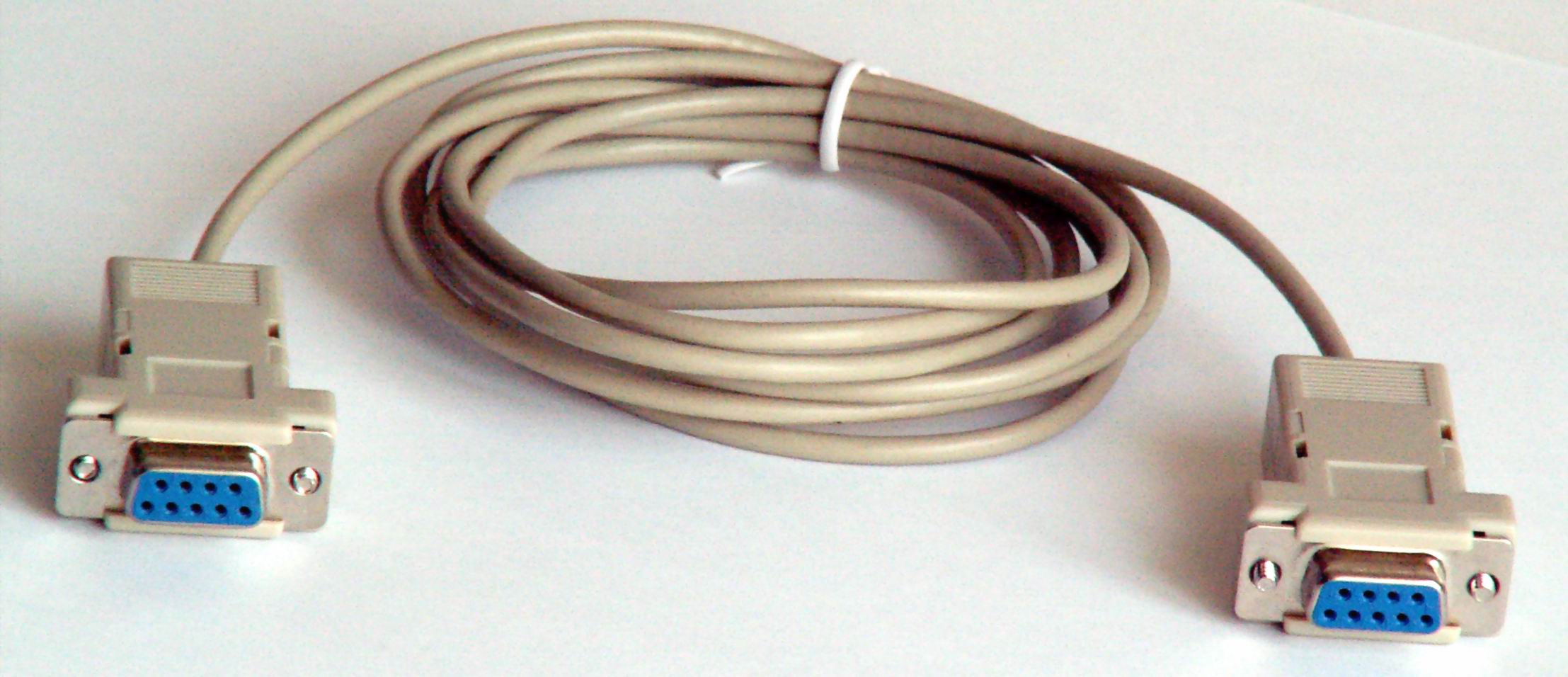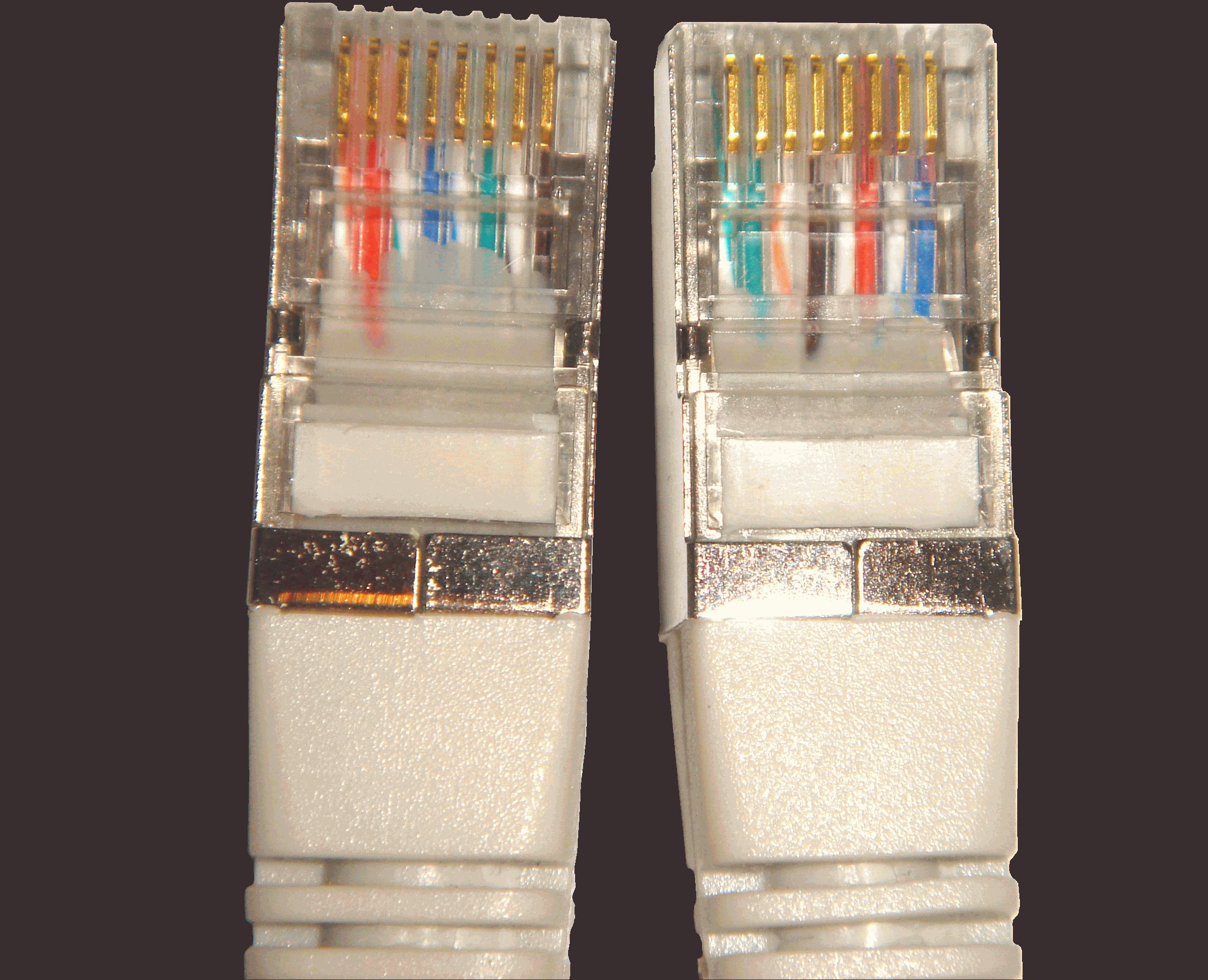Straight-through Patch Cable on:
[Wikipedia]
[Google]
[Amazon]
 A crossover cable connects two devices of the same type, for example DTE-DTE or DCE-DCE, usually connected asymmetrically (DTE-DCE), by a modified
A crossover cable connects two devices of the same type, for example DTE-DTE or DCE-DCE, usually connected asymmetrically (DTE-DCE), by a modified
 *
*
 A crossover cable connects two devices of the same type, for example DTE-DTE or DCE-DCE, usually connected asymmetrically (DTE-DCE), by a modified
A crossover cable connects two devices of the same type, for example DTE-DTE or DCE-DCE, usually connected asymmetrically (DTE-DCE), by a modified cable
Cable may refer to:
Mechanical
* Nautical cable, an assembly of three or more ropes woven against the weave of the ropes, rendering it virtually waterproof
* Wire rope, a type of rope that consists of several strands of metal wire laid into a hel ...
called a crosslink. Such a distinction between devices was introduced by IBM
International Business Machines Corporation (using the trademark IBM), nicknamed Big Blue, is an American Multinational corporation, multinational technology company headquartered in Armonk, New York, and present in over 175 countries. It is ...
.
The crossing of wires in a cable or in a connector adaptor allows:
* connecting two devices directly, output of one to input of the other,
* letting two terminal (DTE) devices communicate without an interconnecting hub knot, i.e. PCs,
* linking two or more hubs, switches
In electrical engineering, a switch is an electrical component that can disconnect or connect the conducting path in an electrical circuit, interrupting the electric current or diverting it from one conductor to another. The most common type o ...
or routers (DCE) together, possibly to work as one wider device.
In contrast, a straight-through cable uses direct wiring to connect complementary devices, e.g. a PC to a switch.
Concept
Straight-through cables are used for most applications, but crossover cables are required in others. In a straight-through cable, pins on one end correspond exactly to the corresponding pins on the other end (pin 1 to pin 1, pin 2 to pin 2, etc.). Using the same wiring scheme at each end yields a straight-through cable (a given color wire connects to a given number pin, the same at both ends). In this case, the terminations are identical, so only one pinout is required. In a crossover cable, pins do not correspondsome or all of the conductors are swapped at the terminations. For example, if pin 1 on one end goes to pin 2 on the other end, then pin 2 on one end goes to pin 1 on the other end, and the other pins remain unaffected. Such crossover cables are electrically symmetrical, meaning that they work identically regardless of which way you plug them in (if you turn the cable around, it still connects the same pins as before). Using different wiring at each end yields a crossover cable (a given color wire connects to one number pin at one end, and a different number pin at the other).Examples
 *
* Null modem
Null modem is a communication method to directly connect two data terminal equipment, DTEs (computer, computer terminal, terminal, printer (computing), printer, etc.) using an RS-232 serial cable. The name stems from the historical use of RS-232 ...
of RS-232
In telecommunications, RS-232 or Recommended Standard 232 is a standard introduced in 1960 for serial communication transmission of data. It formally defines signals connecting between a ''DTE'' (''data terminal equipment'') such as a compu ...
* Ethernet crossover cable
An Ethernet crossover cable is a crossover cable for Ethernet used to connect computing devices together directly. It is most often used to connect two devices of the same type, e.g. two computers (via their network interface controllers) or two ...
* Rollover cable
Rollover or roll over may refer to:
Arts and entertainment
* Rollover (film), ''Rollover'' (film), a 1981 American political thriller
*''Roll Over'', a 1992 album by Hound Dog (band), Hound Dog
* "Roll Over", a 2006 song by Zico Chain
* "Roll Ove ...
* A loopback
Loopback (also written loop-back) is the routing of electronic signals or digital data streams back to their source without intentional processing or modification. It is primarily a means of testing the communications infrastructure.
Loopback c ...
is a type of degraded "one side crosslinked connection" connecting a port to itself, usually for test purposes.
Other technologies
Some connection standards use differentbalanced pair
In telecommunications and professional audio, a balanced line or balanced signal pair is an electrical circuit consisting of two conductors of the same type, both of which have equal impedances along their lengths, to ground, and to other c ...
s to transmit data, so crossover cables for them have different configurations to swap the transmit and receive pairs:
* Twisted pair Token Ring
Token Ring is a Physical layer, physical and data link layer computer networking technology used to build local area networks. It was introduced by IBM in 1984, and standardized in 1989 as IEEE Standards Association, IEEE 802.5. It uses a sp ...
uses T568B pairs 1 and 3 (the same as T568A pairs 1 and 2), so a crossover cable to connect two Token Ring interfaces must swap these pairs, connecting pins 4, 5, 3, and 6 to 3, 6, 4, and 5 respectively.
* A T1 cable uses T568B pairs 1 and 2, so to connect two T1 CSU/DSU devices back-to-back requires a crossover cable that swaps these pairs. Specifically, pins 1, 2, 4, and 5 are connected to 4, 5, 1, and 2 respectively.
* A 56K DDS cable uses T568B pairs 2 and 4, so a crossover cable for these devices swaps those pairs (pins 1, 2, 7, and 8 are connected to 7, 8, 1, and 2 respectively).
See also
* Electrical connector wiring *Pinout
In electronics, a pinout (sometimes written "pin-out") is a cross-reference between the contacts, or ''pins'', of an electrical connector or electronic component, and their functions. "Pinout" now supersedes the term "basing diagram" which was the ...
* Structured cabling
In telecommunications, structured cabling is building or campus cabling infrastructure that consists of a number of standardized smaller elements (hence structured) called subsystems. Structured cabling components include twisted pair and opt ...
* ANSI/TIA-568
ANSI/TIA-568 is a technical standard for commercial building cabling for telecommunications products and services. The title of the standard is ''Commercial Building Telecommunications Cabling Standard'' and is published by the Telecommunications I ...
References
{{DEFAULTSORT:Crossover Cable Signal cables